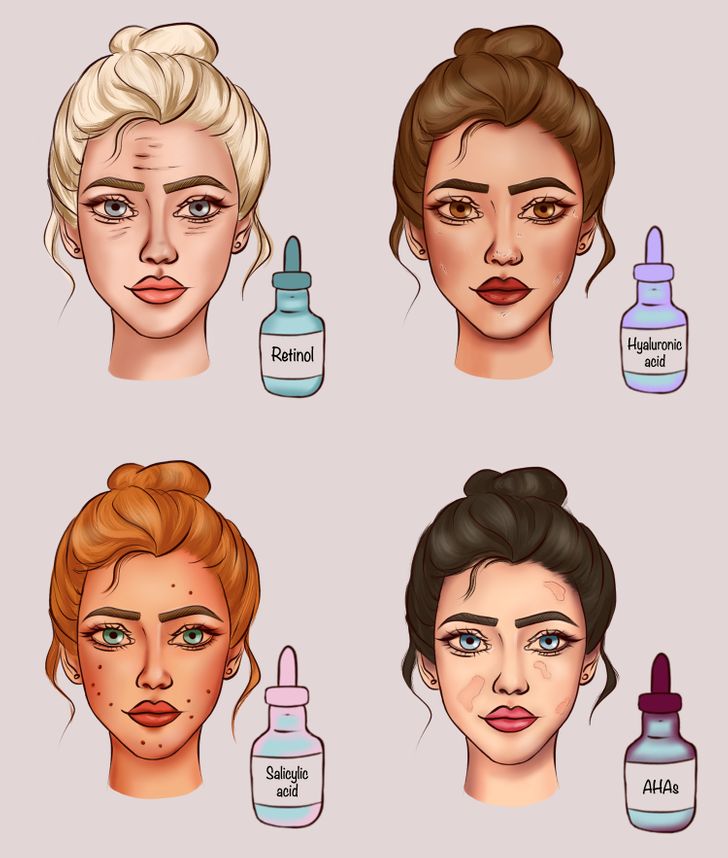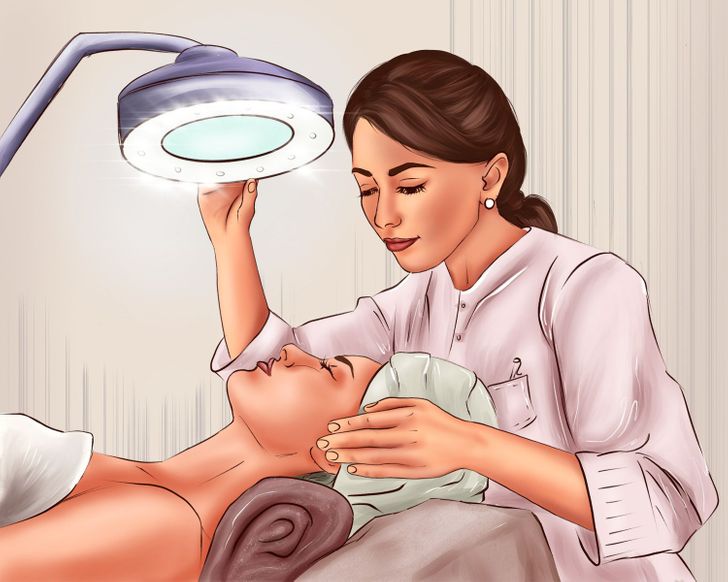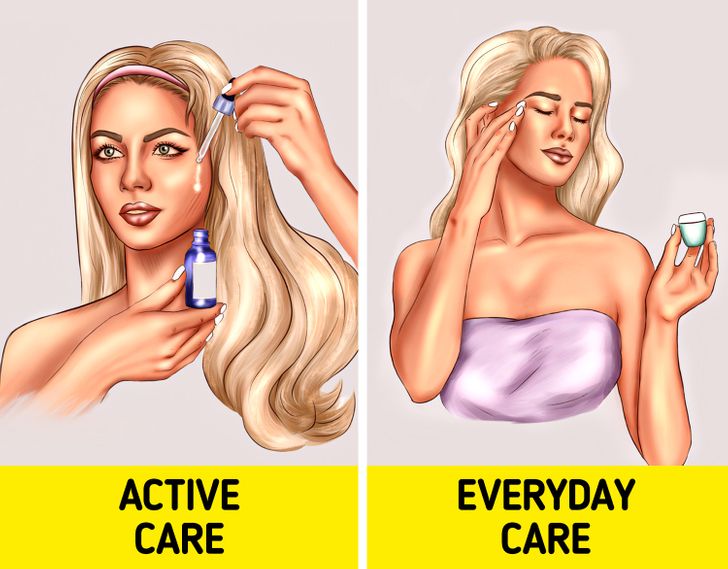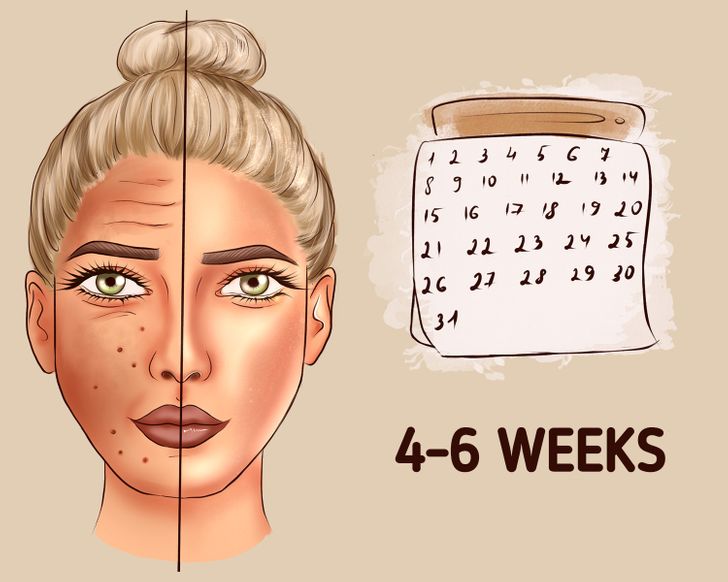How to Use Face Serums
A serum is an everyday care product for the skin on your face. It could be a gel, a cream, or an aqueous suspension. It contains a higher concentration of active ingredients than regular care products which is why it’s used for solving very specific problems like acne, the first signs of aging, hyperpigmentation, and other things.
5-Minute Crafts has prepared a serum guide for you that includes an overview of what types of serums there are, how to choose one, and how to use them. In this guide, we are giving you very general information, so before using any serums, it’s necessary to consult a specialist that can tell you which serums are best for your skin.
What types of serums are there?

-
Anti-age serums are supposed to fight the first signs of aging. They renew the skin and stimulate the production of collagen — the protein that keeps the skin elastic. These serums usually contain retinol, vitamin C, and peptides.
-
Antioxidant serums fight free radicals that are one of the reasons for aging. The main antioxidants are vitamins A, C, and E, which are often included in these serums.
-
Hydrating serums hydrate the skin and prevent it from drying out. Most of the time, these serums keep the water on the skin’s surface. This type of serum contains hyaluronic acid, vitamin B5, or squalane.
-
Serums for sensitive skin have components in them that fight acne (salicylic acid) and niacinamide to soothe irritated skin.
-
Serums with AHA-acids peel and renew the skin. They even out the skin tone, smooth it, prevent the appearance of wrinkles, and help fight acne and pigmentation.
How to choose a serum?

Ideally, you should consult a specialist. A good cosmetologist will tell you which ingredients your skin needs and what you should consider when choosing a serum, like:
- Skin type. People with dry skin, for example, should be careful with serums containing acids and retinol. They might dry the skin and irritate it.
- Allergic reactions. Maybe, in the past, you had an allergic reaction to certain components. Try avoiding these.
- Your current condition. Choose a serum based on the condition of your skin today. If you have several problems, you should look at the serums that solve all of them. For example, salicylic acid treats acne and exfoliates the skin. And vitamin C fights pigmentation, protects the skin from free radicals, and prevents the appearance of wrinkles by stimulating the production of collagen.
When to use a serum?

After washing and before using cream. The best sequence is this:
- Cleaning product (foam, gel, lotion, or micellar water)
- Serum
- Eye skin cream
- Regular face cream
- Sunscreen (if needed)
Also, there are some basic rules:
- Antioxidant serums are used in the morning. It helps to protect the skin from the bad influence of the environment and free radicals.
- Anti-aging serums are used before sleep. At night, the process of renewing the skin happens faster.
- Hydrating serums can be used twice a day to keep the skin as hydrated as possible.
How to use a serum correctly?
Put the serum in a thin layer and wait for it to get absorbed. Before using it, read the instructions on the pack. It usually describes the exact way to apply the serum, and also whether you need a break between when you use a serum or a cream.
Can a serum replace a regular cream?

Not really. Serums and creams have a different effect on the skin.
Serums are lighter than hydrating creams so they get absorbed fast and get into the skin deeper. They are not supposed to replace hydrating creams but they can be used to enhance their effects. For example, if it’s a serum with hyaluronic acid.
Hydrating creams are thicker than serums. They are supposed to hydrate the skin and prevent the moisture from disappearing. Some creams have active ingredients in them but if you need to solve some really serious problems, it’s better to combine them with a good serum.
When to expect results?

Serums have a high concentration of active ingredients which is why the effect is visible earlier than when using a regular cream. But it all depends on the type of serum. Ideally, if you want to see results, you will need to use a serum for 4-6 weeks.
What else is important to know?
-
If you are using several serums, it’s better to use the light ones at first and then the more serious ones. You should also know that the first serum you apply will work better than the next one. This is something you should also consider.
-
A buffer layer made of a different product could help if the active ingredient is really irritating for your skin.
-
Before the first use, test a little bit of the product on your elbow to make sure you don’t have an allergic reaction.